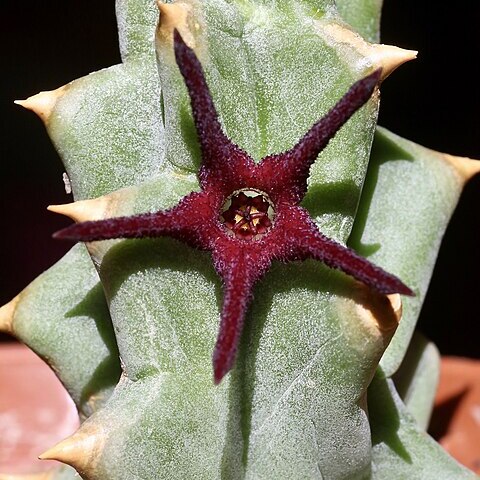Robust, clump-forming, glabrous succulent, up to 0.5 x 0.6 m, stems leafless, very irregularly 4-or 5-angled, spiky-tuberculate, up to 40 mm diam. Flowers ± 3-15, opening together in many sessile clusters along grooves of stem, pedicels 2-3 mm long. Corolla campanulate, with many, bristle-tipped papillae around mouth of tube, 20-27 mm diam., inside purple-black, white in tube, tube 3-5 mm long, lobes spreading, narrowly lanceolate, 10-20 x 4-7 mm. Corona purple-brown, outer lobes bifid into erect teeth, inner adpressed to anthers and rising up in centre, with an erect, dorsal appendage.
A small succulent shrub. It keeps growing from year to year. It grows up to 60 cm high. The stems can be 2 cm thick. The stems have ridges. The thorns are spaced. The flowers are small. They are 2-3 cm with. They are pale green near the base. There can be 1-20 flowering stalks per stem with 1-30 flowers each.
Leafless, succulent shrublet, 10-45 cm, rooting from central stem, tubercles hardened into sharp, spreading teeth, obscurely arranged in 4 or 5 angles; sap clear. Flowers like Q. arenicola , but lower half of petals and mouth of tube roughly papillate, very foul-smelling.

